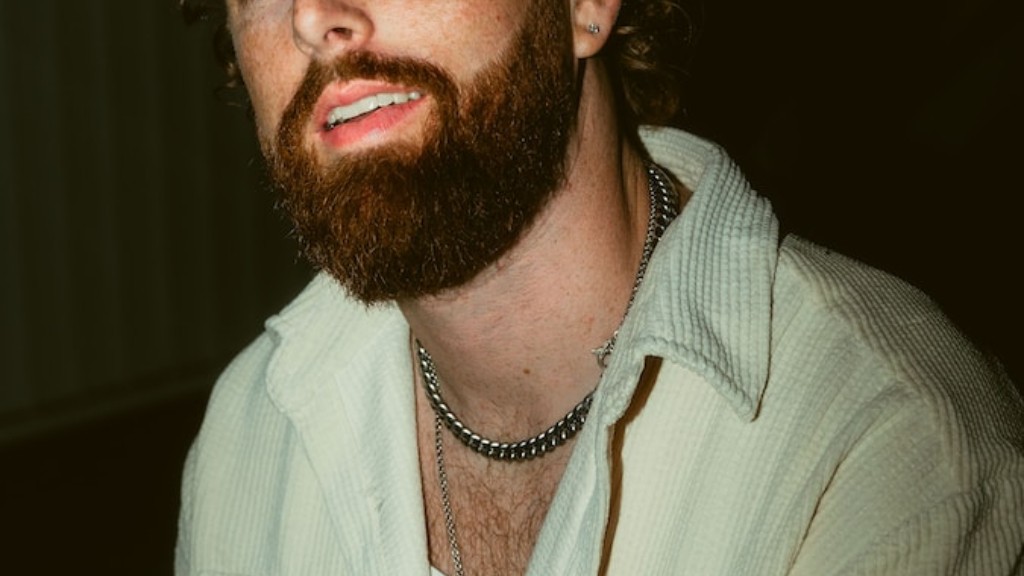Most people believe that once you grow a beard, you’re stuck with it for life. However, there are actually several ways to remove a beard permanently. These methods range from home remedies to laser hair removal. If you’re looking to get rid of your beard for good, research the different options and find the best method for you.
Yes, beard removal is possible through a number of methods including laser hair removal, electrolysis, and radiofrequency ablation. However, it is important to note that results may not be permanent, and touch-ups may be necessary.
How can I stop my beard from growing permanently?
If you’re looking for a permanent solution to getting rid of unwanted facial hair, electrolysis may be right for you. This method involves destroying the growth center of the hair follicle, which prevents the hair from growing back. While it can be time-consuming and expensive, electrolysis is a safe and effective way to achieve permanent hair removal.
There are a few foods that may help you to get rid of facial hair. Sunflower seeds, sesame seeds, flax seeds, garlic, peaches, oats, dried fruits, barley, mung beans, lentils, and rice bran can all help to increase the estrogen (hormone) levels in the body and reduce unwanted facial hair.
Is it good to remove facial hair
There are many benefits to shaving your face, especially for women. Removing unwanted hair, debris, and dead skin cells can help to brighten your complexion and make your makeup go on smoother and last longer. If you’re self-conscious about facial hair, shaving can also boost your confidence.
This is a natural way to remove facial hair. Gram flour, rose water and lemon juice are mixed together to form a paste. This paste is applied on the face and allowed to dry completely. Once it is dry, the facial hair is removed by rubbing it off with the fingers. This process should be repeated three to four times a week for best results.
Does plucking chin hair make it grow more?
Repeatedly ripping hair out from its follicle can actually make it grow back thicker, darker, and coarser. Additionally, it often grows back more plentiful and faster. So if you’re looking to achieve the opposite effect, it’s best to avoid waxing and plucking.
Eflornithine is used to slow the growth of unwanted hair on the face in women. Eflornithine works by blocking a natural substance that is needed for hair to grow. This substance is located in your hair follicle (the sac where each hair grows). By blocking this substance, eflornithine slows the growth of unwanted hair on the face.
What blocks beard growth?
If you’re looking to improve your beard growth, it’s important to make sure your testosterone levels are where they should be. Low levels of testosterone can negatively affect beard growth, so if you’re not happy with the amount of growth you’re seeing, it may be worth checking your hormone levels. Clinically low testosterone levels may require treatment from a doctor, but in many cases, simply making some lifestyle changes can help increase levels naturally. eating a healthy diet, exercising regularly, and getting enough sleep are all important for maintaining optimal testosterone levels. If you suspect your levels might be low, it’s worth talking to your doctor to get a more accurate picture of your health.
There are two main treatments for hair removal: electrolysis and laser hair removal.
Electrolysis is a process where an electric current is used to stop your hair from growing. This method is usually permanent, although it can take multiple sessions to achieve desired results.
Laser hair removal uses a focused beam of light to target the hair follicles and stop hair growth. This method is often less painful than electrolysis and can be done in shorter sessions. However, it is not permanent and results may vary.
How to get rid of your beard
Depilatories are chemical products that remove unwanted facial hair from the surface of the skin. The chemicals dissolve the hair into a gel-like substance. Apply the depilatory to the skin. Leave the product on the skin based on the timing instructions that come with the product.
There are some definite downsides to waxing! It can be painful, especially if you’re sensitive, and there’s always the potential for skin irritation or even ingrown hairs. Plus, your skin can darken after a waxing, so you have to be careful about that. And finally, you have to wait for your hair to grow back pretty long in between waxings, which can be a hassle.
What are the side effects of removing facial hair?
There are a few different methods of hair removal, each with its own set of pros and cons. Shaving is perhaps the most common method, but it can cause skin irritation and redness, as well as cuts and ingrown hairs. Plucking can also be painful, especially if a lot of hairs are removed at once. Using hot wax can also be dangerous as it can burn your skin. Overall, it is important to weigh the pros and cons of each method before deciding which is right for you.
While shaving your face may give you a smooth appearance, it’s important to not make it a habit. Just like exfoliation, shaving too often or too harshly can damage your skin. If you’re looking to get a smooth shave, make sure to be gentle and use a sharp razor.
How do I stop my chin from growing hair
If you’re looking to get rid of chin hair, there are a few different options you can try. Laser hair removal is one of the most effective methods, but it can be pricey. Eflornithine (Vaniqa) is a prescription cream that can also help slow down hair growth. Other options include waxing, shaving, tweezing, epilation, and depilatory creams. Threading is another popular option, especially if you’re looking for a more precise method.
Electrolysis is the only FDA-approved method for permanent hair removal. The treatment is typically done in an office by board-certified dermatologists or other qualified skin-care professionals, such as licensed estheticians. Electrolysis involves using a small needle to apply an electrical current to the hair follicle. The current destroys the hair follicle, which prevents the hair from growing back.
Can plucked beards grow back?
It has been observed that regeneration of hairs after plucking is a population-based behavior that depends on the density and distribution of the plucked follicles. Plucking hairs from high density areas is more likely to lead to significant hair regeneration as compared to lower density plucking.
Hirsutism is a condition where a woman has too much hair on her body. It’s caused by excess hormones called androgens. For women, the hair may grow in places where men often have a lot of hair, but women often don’t. This includes the upper lip, chin, chest, and back. It can run in families.
Final Words
There is no definitive answer to this question since everyone’s hair growth patterns are unique. However, some people have had success with using laser hair removal treatments to diminish beard growth. It is important to note that laser hair removal is usually a gradual process, so it may take several sessions before seeing significant results.
There is no one answer to this question as it depends on the individual. Some people may be able to remove their beard permanently with treatments such as laser hair removal, while others may find that their beard grows back regardless of treatments. Ultimately, it is up to the individual to decide whether or not they want to remove their beard permanently.





